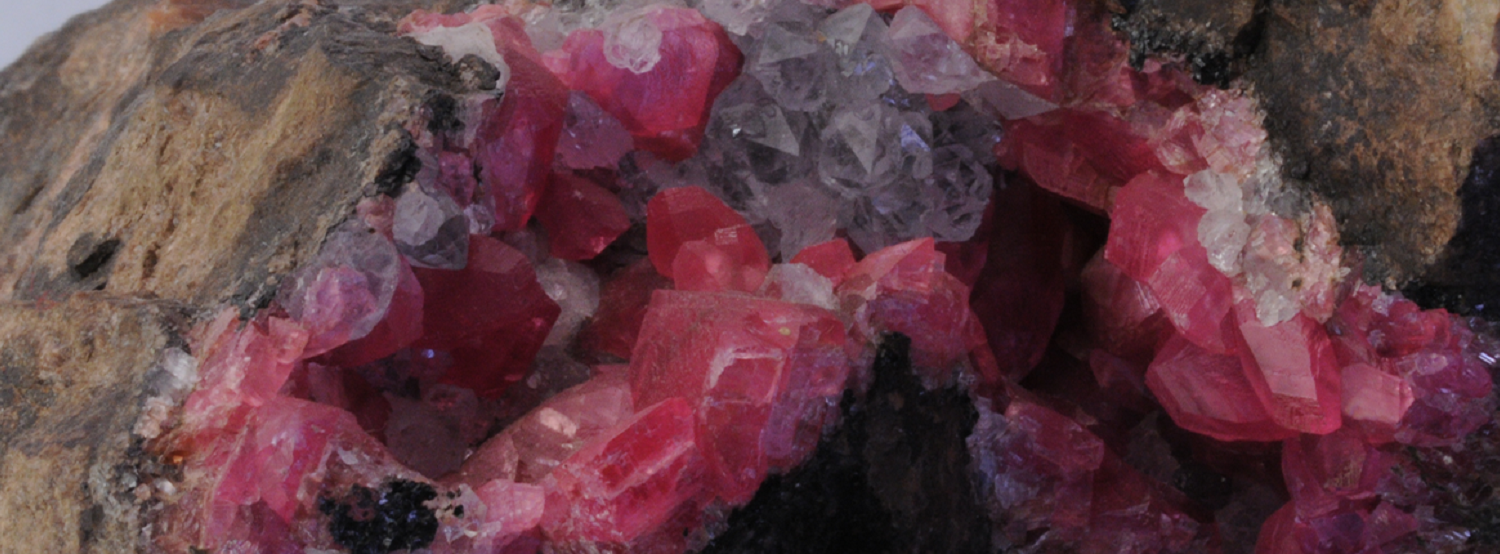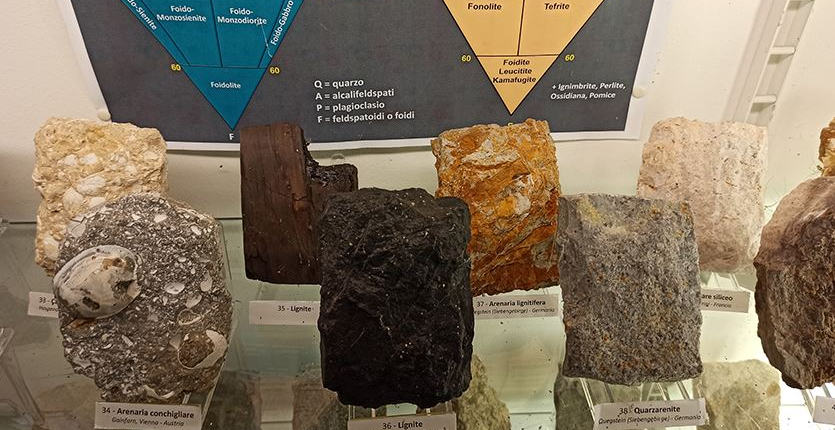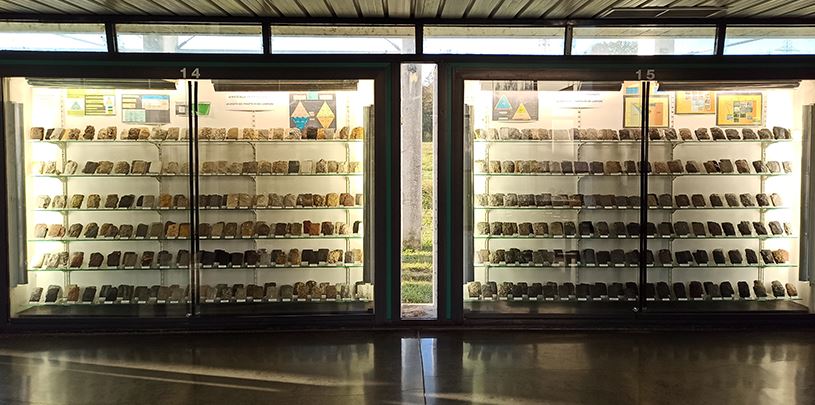The Mineralogy Collection of the University of Parma originated from the union of a series of late 18th century collections: Linati, Piroli, Cavezzali, which merged, with limited subsequent accessions, into a single structure. They were joined in the last century by the acolyte Krantz.
All that remains of these subcollections is the Cocconi catalogue, compiled by hand in the years 1886-1887, which lists the number of specimens present at the time. This catalogue, which is an important historical document, is of almost no use because over the years the connection between the reference in the catalogue and the objects in the sub-collection has been lost for the vast majority of the specimens.
The current situation is of a set of samples on display in the central corridor of the Earth Sciences Complex on the university campus at 157/a Via Usberti, premises belonging to the Department of Chemical, Life and Environmental Sustainability Sciences.
This is a set of about 800 finds, selected for aesthetic characteristics and classified on a systematic basis.
An exception to the systematic classification are the first showcases from the entrance, which refer to minerals from the Parma area.
In addition to the samples on display, it must unfortunately be pointed out that the rest of the collection, over 5,000 pieces, is located in storage outside the building, which is currently unfit for use.
Among the samples from the Parma area, it is worth mentioning the barite septaria, the black quartz in the chalks, the large calcite crystals grown in sedimentary environments, and finally the rare melanoflogite, a clathrate found in only a few places in the world, of considerable technological interest for its potential applications in methane ‘storage’.
Among the samples in the corridor, the splendid crystallisations of amethyst, the mammellonite malachite, the labradorite with iridescent decimetric crystals in various colours, and the splendid garnets should be noted.
Finally, a note on the display of historical meteorite samples, a collection developed in the late 18th and early 19th centuries, which includes fragments of the most famous meteorites that fell during the period. Among them are the Renazzo carbonaceous chondrite, the Juvinas eucrite, the L’Aigle chondrite, from the examination of which Biot proposed the extraterrestrial origin of meteorites, and finally the Krasnoyarsk pallasite.
The exhibition is enriched with information on the samples and on mineralogy and crystallography in general, from the permanent display of panels prepared for the exhibitions on the Apuan marbles, in 2006, and Cristalli! in 2014.





